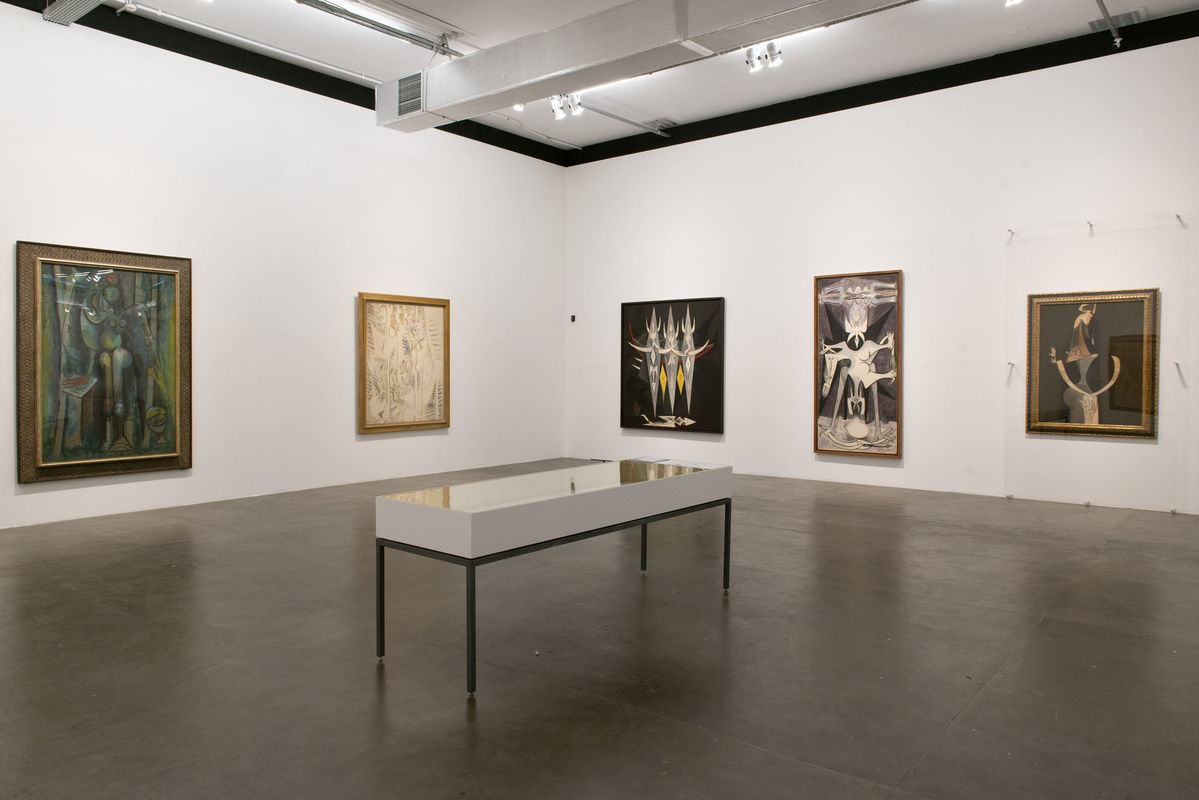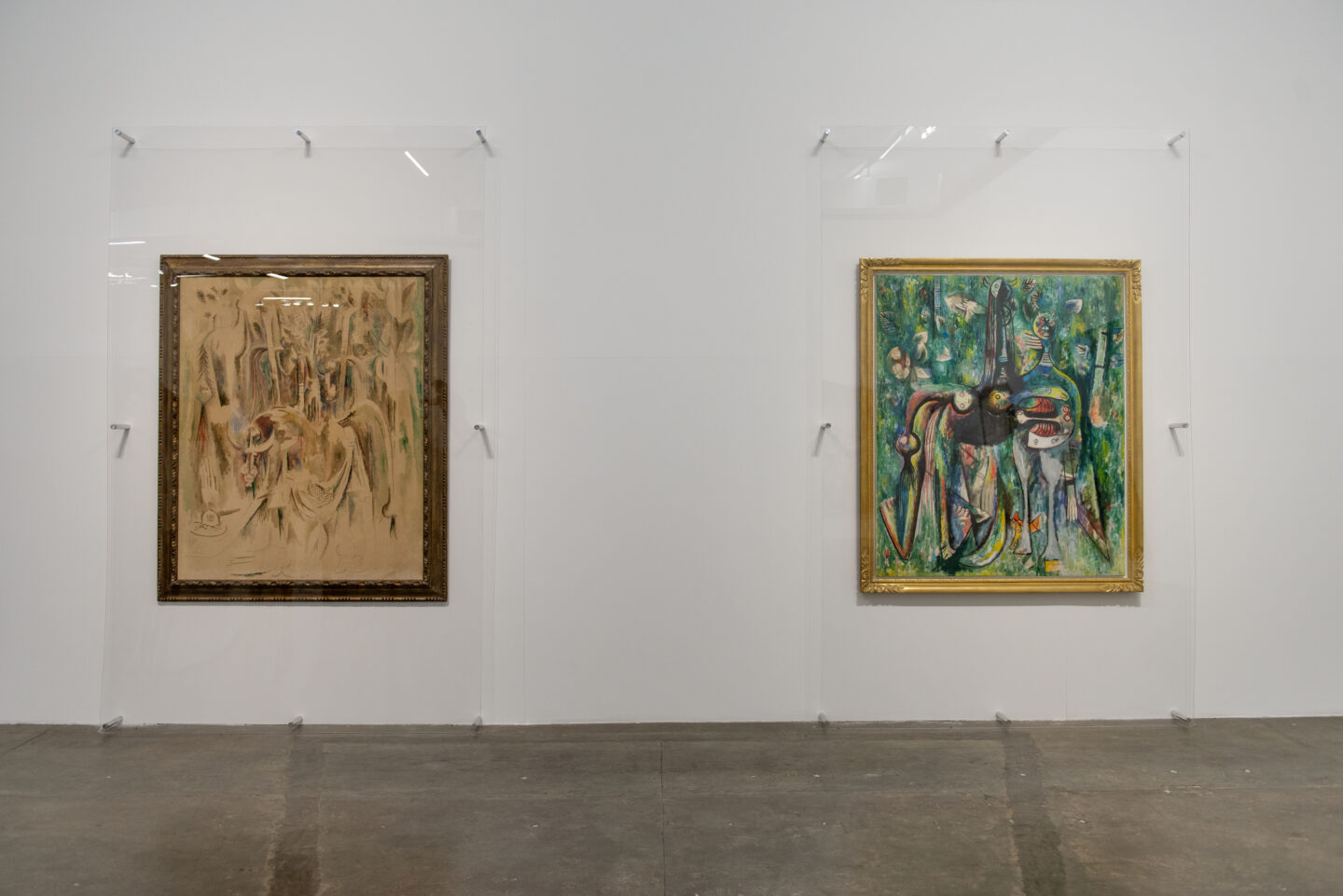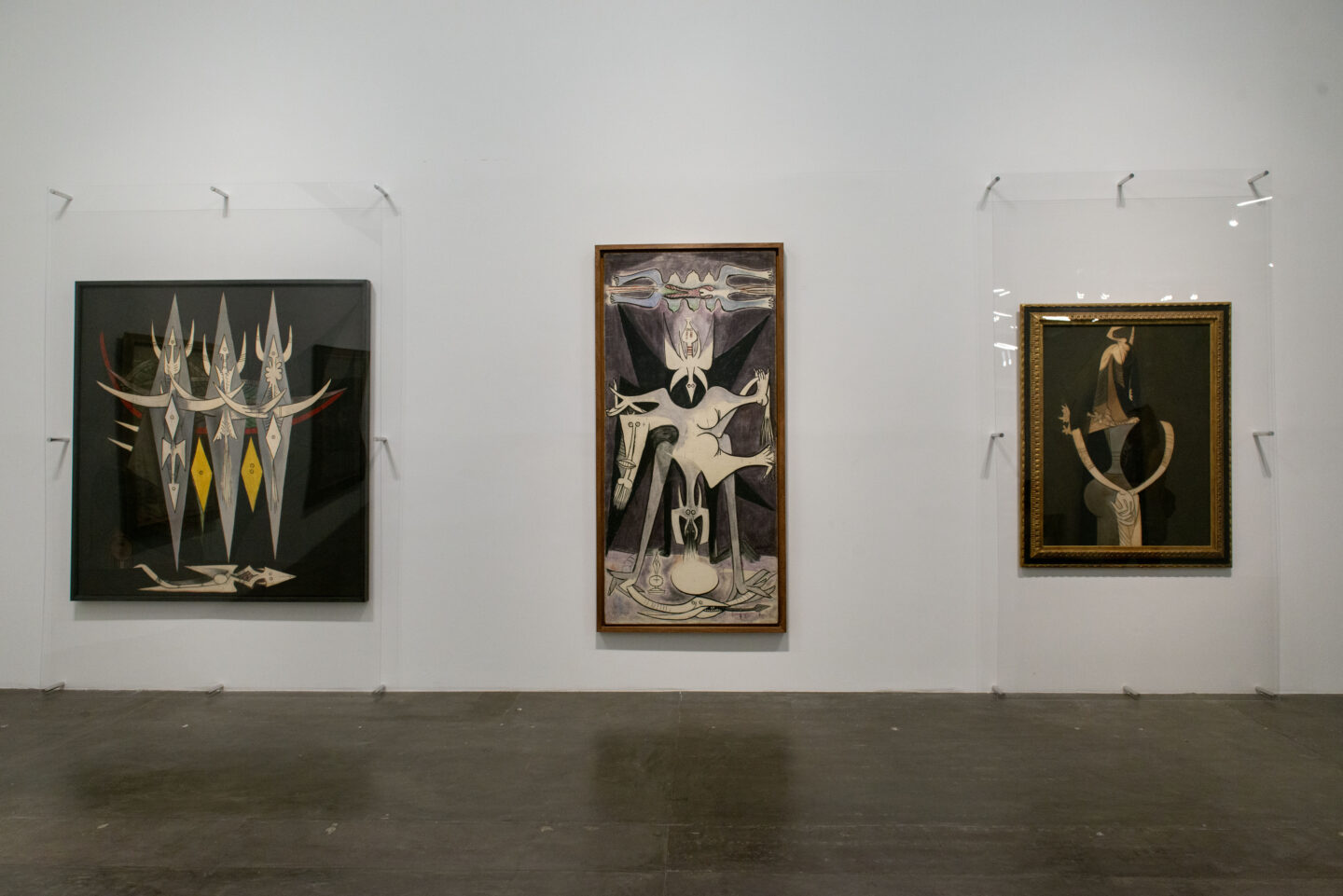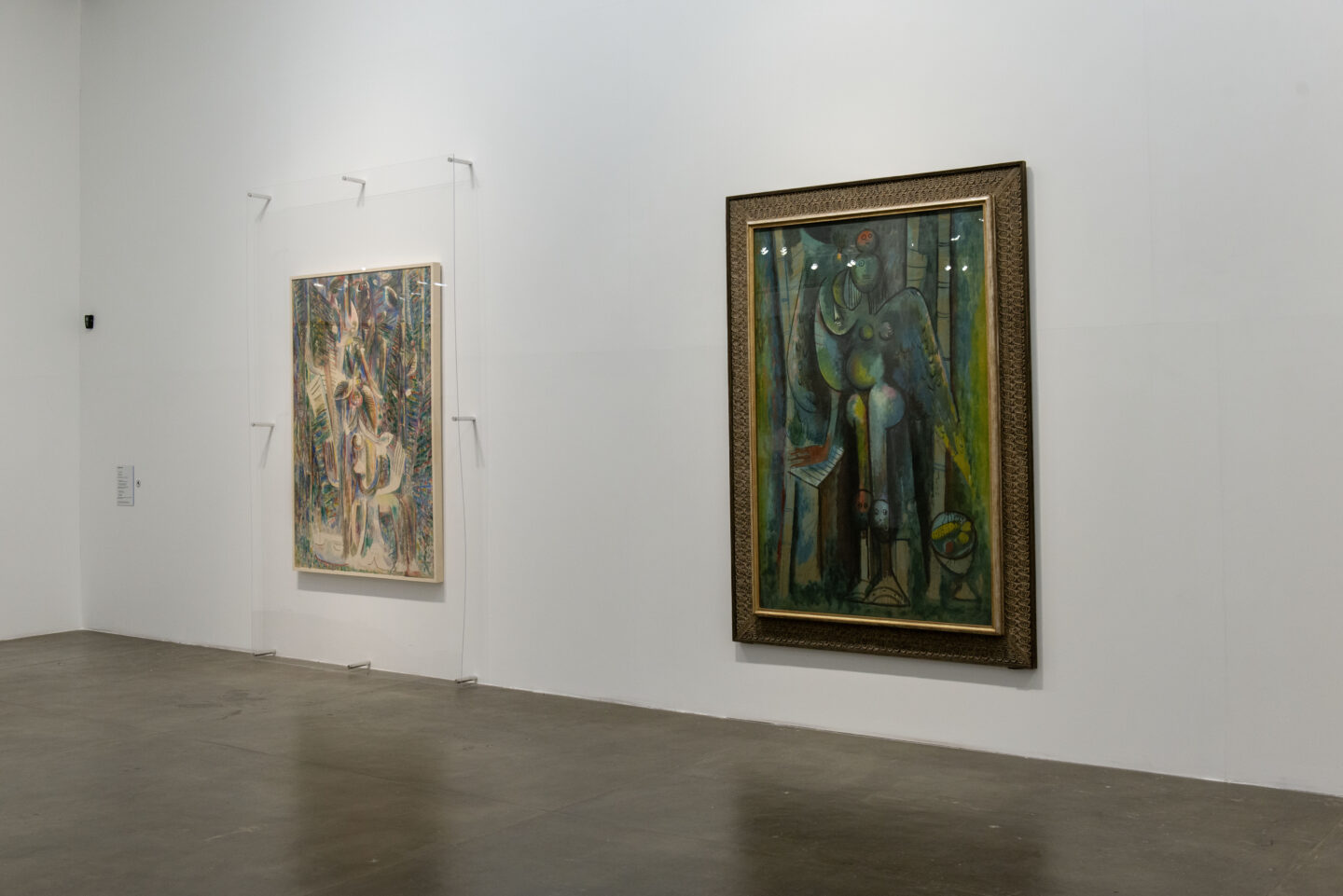
Wifredo Lam
Cuban artist Wifredo Lam (1902-–82) produced the illustrations for French writer André Breton’s Fata Morgana (1941)1 in the context of political refuge and an imminent transatlantic journey. The drawings include the signature imagery he developed in subsequent work: horned creatures, quadrilateral heads, crescent moons with eyes, and the horse-like figure that became his celebrated inter-species femme-cheval, as seen in Mujer sentada [Seated woman] (1949). In his art, Lam centers Black culture through visual synecdoche on Santería (also known as Regla de Ocha and Lucumí), an Africandiasporic religion largely based on Yoruba beliefs and traditions, peppered with aspects of Catholicism. Titles such as Le Sombre Malembo, Dieu du carrefour [Dark Malembo, God of the Crossroads] (1943) identify Malembo, a slave trade station in West Africa, and Eleguá, an orisha or Yoruban deity who is the guardian of the crossroads, and is represented by Lam with a horned head and circular eyes. Here the “crossroads” might refer to the Middle Passage as well as to Lam’s own transatlantic journey back home to Cuba. Key to such work is how Lam decolonizes representational codes: hybrid figures displace distinctions between male/female, human/animal, animal/plant, challenging dominant Western classificatory systems and ontological separations.
Lam also bodies forth such displacements through his painterly transmutations that work at the level of material application, whereby, for example, the thinned paint in Omni Obini (1943), and its ensuing watercolor effect, intensify Lam’s purposeful delocalization of color – blues and greens with passages of reds, oranges, and yellows – to further animate the relations among the elements in his painted worlds. In doing so, Lam harnesses the orishas’ life forces, their aché, as a decolonial method that flows across the human, animal, and vegetal and that he visually translates not only as hybrid beings but also through their entwinement with the surroundings through the interpenetration of figure and ground. His purposeful entanglement of oppositions also suggest how different entities might interlock in nonhierarchical ways to be mutually transformative. At the center of what I call Lam’s “aché modernism” is thus the shifting nature of identity and embodiment, whereby ontological crossings and relational openness draw attention to the liveliness of the relations between material and immaterial worlds.
kaira cabañas
[Malembo sombrio, Deus das encruzilhadas] (1943) identificam Malebo, centro de comércio de escravizados na África Ocidental, e Eleguá, um orixá ou deidade iorubá que é o guardião das encruzilhadas, representado por Lam com chifres e olhos redondos. Aqui, as encruzilhadas podem se referir à Passagem do Meio, assim como à
Wifredo Lam (Sagua la Grande, Cuba, 1902 – Paris, França, 1982) was a prominent Cuban artist known for his distinctive blend of African, Caribbean, and Surrealist influences. His artwork embodied a unique fusion of various modern influences and explored themes of identity, spirituality, and social justice. Lam’s work, consisting predominantly of paintings, can be found in collections around the world, including the collections of institutions such as the Museo de Arte Latinoamericano de Buenos Aires (Argentina), MoMA (New York, USA), Centre Pompidou (Paris, France), and Tate Modern (London, UK).
This participation is supported by Institut français.
1. The edition presented at the 35th Bienal is: André Breton, Fata Morgana. Illustrated by Wifredo Lam. Buenos Aires: Éditions des Lettres Françaises, 1942.
- Vista da obra Omi Obini de Wifredo Lam durante a 35ª Bienal de São Paulo – coreografias do impossível © Levi Fanan / Fundação Bienal de São Paulo
- Vista de obras de Wifredo Lam durante a 35ª Bienal de São Paulo – coreografias do impossível © Levi Fanan / Fundação Bienal de São Paulo
- Vista de obras de Wifredo Lam durante a 35ª Bienal de São Paulo – coreografias do impossível © Levi Fanan / Fundação Bienal de São Paulo
- Vista de obras de Wifredo Lam durante a 35ª Bienal de São Paulo – coreografias do impossível © Levi Fanan / Fundação Bienal de São Paulo
- Vista de obras de Wifredo Lam durante a 35ª Bienal de São Paulo – coreografias do impossível © Levi Fanan / Fundação Bienal de São Paulo
- Vista de obras de Wifredo Lam durante a 35ª Bienal de São Paulo – coreografias do impossível © Levi Fanan / Fundação Bienal de São Paulo

 Português
Português




